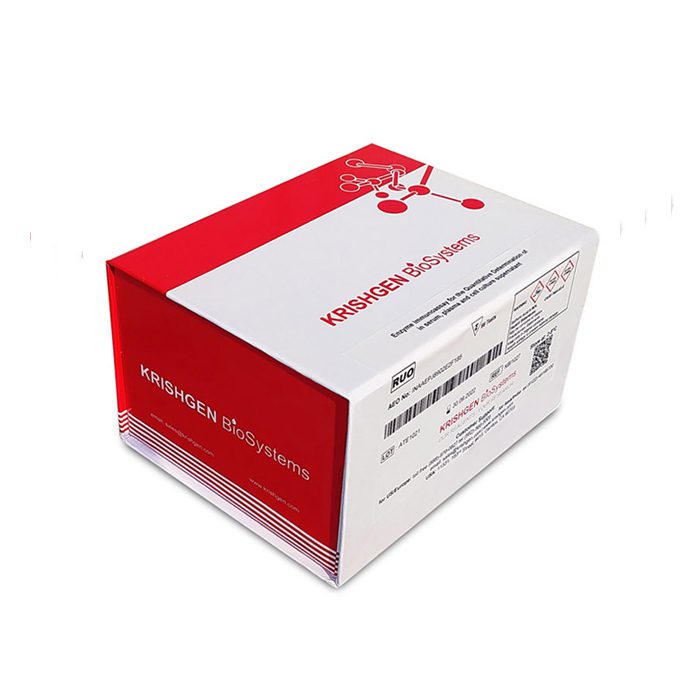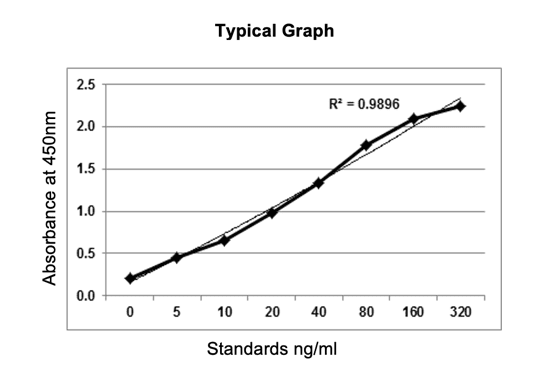KRIBIOLISA™ High Five (H5) HCP ELISA
- Bilder (2)
| Artikelname: | KRIBIOLISA™ High Five (H5) HCP ELISA |
| Artikelnummer: | KBS-KBBP21 |
| Hersteller Artikelnummer: | KBBP21 |
| Alternativnummer: | KBS-KBBP21-ELISA |
| Hersteller: | Krishgen Biosystems |
| Kategorie: | Kits/Assays |
| Konjugation: | Colorimetric |
| KRIBIOLISA™ High Five (H5) HCP ELISA Enzyme Immunoassay for the Quantitative Determination of Hi5 Host Cell Proteins in cell culture supernatant and biological solutions. This ELISA kit is intended in determining the presence of High Five cells Host Cell Protein contamination in various products that are manufactured through recombinant expression in Hi5 cells. It has been validated successfully for testing of in process and final product HCPs in a variety of products regardless of growth and purification process. |
Introduction: The advantages of using insect cells for the expression of complex proteins, such as glycoproteins, G-protein-coupled receptors (GPCRs), virus-like particles (VLPs), and “difficult-to-express” mammalian proteins, have been extensively demonstrated (Stolt-Bergner et al., 2018). High Five cells have been used successfully in the production of several viral-like particles (VLPs), which is of critical importance in vaccine development, such as the development of the COVID-19 vaccine (Krammer and Palese 2015; Cox, 2012). High Five cells have been shown to secrete large quantities of VLPs, making them suitable for purification and use in vaccine manufacturing (Fern?ndez and Vega, 2013). This characteristic, along with other advantages of High Five cells, such as their ability to produce multi-subunit proteins, highlights their potential for high-quality product output in biopharmaceutical manufacturing. When considering the production of recombinant proteins to meet pharmaceutical requirements or for structural, functional, and drug screening studies, the preferred choice is the Baculovirus Expression Vector System (BEVS) (Assenberg et al., 2013; Fern?ndez and Vega, 2013). The BEVS offers flexibility, rapidity, and the ability to generate high titers of complex and multi-subunit gene products, even from challenging cellular locations such as cell membranes (Drugmand et al., 2012). One significant advantage of High Five cells is their high expression levels, making them ideal for large-scale protein production (Assenberg et al., 2013; Drugmand et al., 2012). High Five cells are also well-suited to fold and post-translationally modify complex proteins, such as glycosylation. They can perform these modifications with high efficiency in a similar way to mammalian cell systems, and have been reported to produce 2-10x high levels of recombinant proteins compared to Sf9/Sf21 insect cells. Additionally, High Five cells have excellent culturing qualities, which reduces the need for complex bioreactor setups and equipment. Principle: Sources: |
| Detektionsbereich: | 3 – 100 ng/ml |
| Sensitivitaet: | Limit of Quantification: 0.188 ng/ml; Limit of quantification (LOQ): 3 ng/ml |
| Lagerung: | Samples to be used within 5 days can be stored at 2-8 Degree Celcius, besides that, samples must be stored at – 20 Degree Celcius (assay less lan or equal to 1 month) or -80 Degree Celcius(assay less lan or equal to 2 months) to avoid loss of bioactivity and contamination. Avoid multiple freeze-thaw cycles. The hemolytic samples are not suitable for this assay. |
| Proben: | Cell Culture Supernatant and Biological Solutions |




